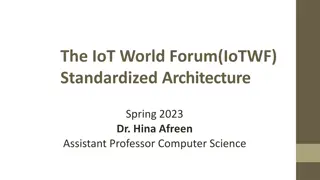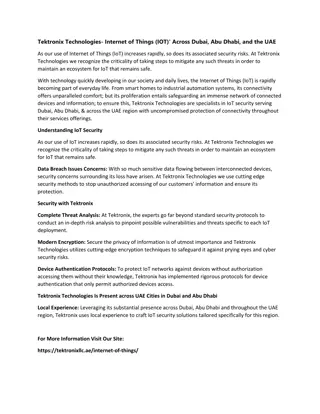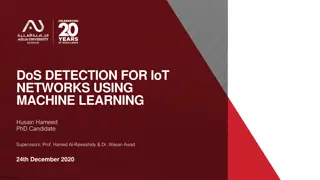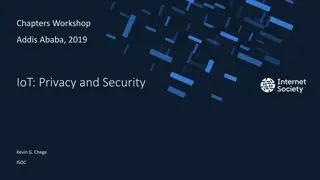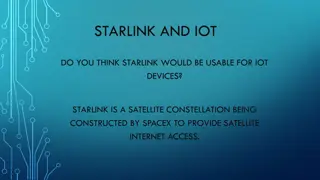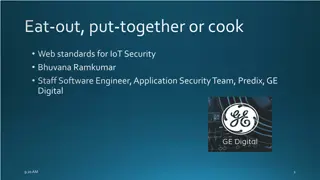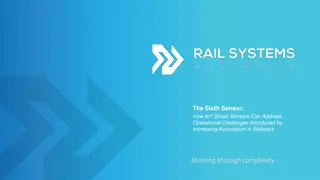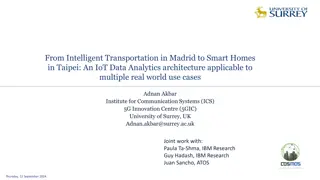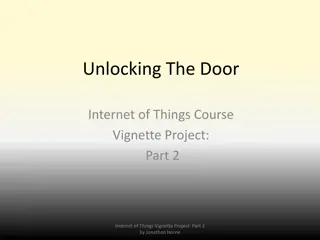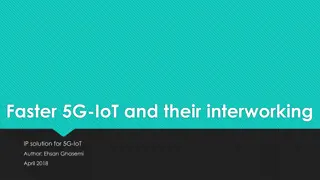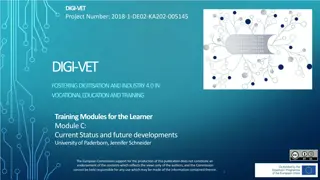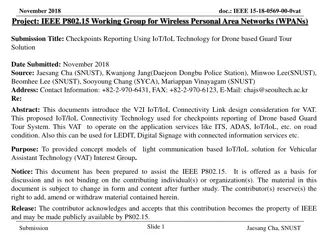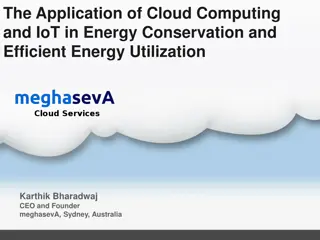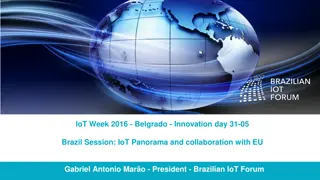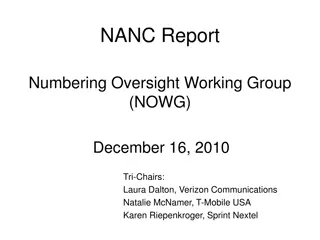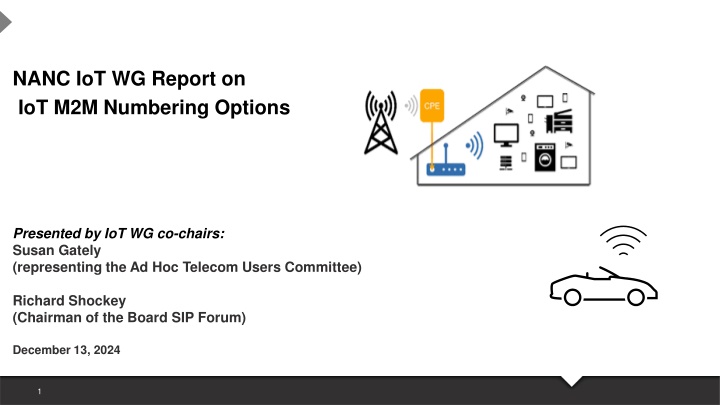
Insights into IoT Device Numbering Options and Utilization
Explore the NANC IoT Working Group's report on IoT/M2M numbering options and the discussion surrounding alternatives to using NANP resources. Learn about potential options suggested and considerations for conserving numbering resources. Understand the importance of E.164-based numbering for IoT device identification and provisioning in the US.
Download Presentation

Please find below an Image/Link to download the presentation.
The content on the website is provided AS IS for your information and personal use only. It may not be sold, licensed, or shared on other websites without obtaining consent from the author. If you encounter any issues during the download, it is possible that the publisher has removed the file from their server.
You are allowed to download the files provided on this website for personal or commercial use, subject to the condition that they are used lawfully. All files are the property of their respective owners.
The content on the website is provided AS IS for your information and personal use only. It may not be sold, licensed, or shared on other websites without obtaining consent from the author.
E N D
Presentation Transcript
NANC IoT WG Report on IoT M2M Numbering Options Presented by IoT WG co-chairs: Susan Gately (representing the Ad Hoc Telecom Users Committee) Richard Shockey (Chairman of the Board SIP Forum) December 13, 2024 1
NANC IoT Number Utilization Work Group Members Voting Members: Ad Hoc Telecom Users Committee AT&T Lumen Maine Public Utilities Commission NTCA The Rural BroadbandAssociation Numeracle Sinch Voice SIP Forum T-Mobile Verizon Washington Utilities and Transportation Commission Non-voting Members: iconectiv SOMOS 2
The NANC Charge Letter https://www.fcc.gov/files/iot-working-group-referral-letter Why and how IoT devices use NANP numbering resources; Whether and to what extent there are alternatives to using NANP numbering resources for IoT device needs, and the degree to which such alternatives are feasible and preferable; How such alternatives might best be adopted and encouraged; Whether and to what extent numbering industry guidelines (such as those of the ATIS Industry Numbering Committee), the Technical Requirements Document of the North American Numbering Plan Administrator contract, and/or FCC rules should be revised to encourage or require such alternatives and/or to bar or restrict certain usage of NANP numbers; and The degree to which reduction in use of numbering resources by IoT devices might aid in numbering resource conservation. The extension: https://www.fcc.gov/files/internet-things-iot-working-group-extension-letter 3 3
Report provides options not formal recommendations The Charge Letter did not ask for recommendations (and there likely would have been no consensus within the WG on a recommendation). Instead, potential options were offered: Potential Option 1: Institute Subordinate Numbering: IoT/M2M specific 1+14-digit address space (NANP-adjacent) Potential Option 2: Institute NANP-adjacent 1+14 Option identified in the CSCN Report to the CRTC Potential Option 3: Obtain a new International Country Code 4
Why and how IoT devices use NANP numbers Regardless of the need for communications from the IoT device to traverse the PSTN, service providers in the US use E.164-based 10-digit NANP numbering resources in IoT devices for identification, provisioning and billing purposes when those devices connect to the mobile access network used for both voice telephony and data transmission. Service providers Operational Support Systems (OSS), Billing Support Systems (BSS), and network elements rely on NANP numbers as a key identifier for both telephony and IoT purposes. Short message service (SMS) is often used to wake up an IoT device, and some SMS requires a NANP number. Examples of IoT devices and service types that utilize 10-digit NANP numbers include fixed wireless broadband and transportation-related IoT devices such as motor vehicles. 5
Items considered but ultimately deprecated The WG found that attempting to develop and implement an alternate addressing space (that could possibly contain alpha numeric characters) is impractical in the foreseeable future, and would be incompatible with existing OSS/BSS and the network elements in use by mobile access operators. The potential cost of replacing existing E.164 based systems to accommodate a new identifier was not readily calculable but anticipated to be cost-prohibitive. The WG did not analyze whether it would be possible to make hardware or software changes in network equipment to accommodate a de novo alpha-numeric address in 64-bit format, but it is the general belief of many members of the group that the magnitude of changes required to implement any alternative addressing solution not based on the E.164 standard would be so costly as to render it infeasible. 6
Additional considerations How such alternatives might best be adopted and encouraged The WG presumes that the parameters of adoption of a new addressing space for use by non- telephony mobile IoT devices would be developed through the Commission s standard processes (i.e., Notice of Inquiry (NOI), Notice of Proposed Rulemaking (NPRM)), and that coordination with other NANP member countries would also be a necessary step. Standards bodies such as 3GPP and ATIS INC may need to be involved as well to ensure any new standards are written or existing standards updated. Use of incentives such as possibly exempting numbers in any new addressing space from any numbers-based charges such as the annual Commercial Mobile Radio Service (CMRS) regulatory fee or state-specific surcharges. Any solution introduced to the industry shall be implemented in a cap and grow methodology The Commission should exempt the porting of numbers within any new IoT number assignment system, consistent with the current regulatory framework for non-geographic 5XX-NXX numbers. 7
Additional considerations Two geographic number conservation ideas recommended by the WG The WG recommends that the NANPA request that service providers conduct an internal audit to determine if any thousands-blocks or central office codes from geographic NPAs could be returned to the numbering pool and non-geographic 5XX numbers be used instead for IoT services. The WG recommends that service providers examine their wholesale number allocation practices, to determine where and when non-geographic 5XX numbers can be utilized instead of geographic numbers, and then take the necessary steps to implement guardrails so that geographic numbers are only allocated when truly needed. 8

